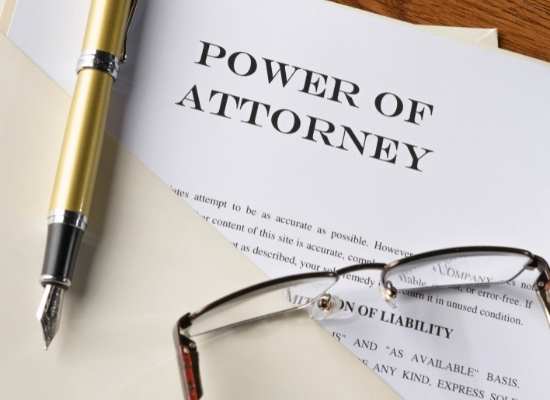In this video, Land Dispute Mediator and Attorney Philip Hundl talks about his first two top tips for successful land dispute mediation. Call or text 800-266-4870 for an appointment. Appointments can be online, in-person or by phone.
Summary of Successful Land Dispute Mediation Part One
Hi, I’m Philip Hundl and I’m an attorney in Texas who focuses on land litigation, which could include partitions of property, easement disputes, and also representing landowners facing eminent domain proceedings or condemnation proceedings. Many of you have probably seen my videos about pipeline easements, high voltage transmission line easements, and partition cases.
Why Land Dispute Mediation Is Important
What some folks don’t know about me is that I am a mediator as well. I want to talk more about alternative dispute resolution (ADR), which includes mediation. I’ll explain why mediation is important in resolving land disputes. The law in Texas and the courts encourage mediation.
When I talk about land disputes, the case might involve an easement dispute about ingress and egress from a parcel of land. Perhaps neighbors need an easement to get to their property across someone else’s land.
Perhaps the land dispute is a partition case. In a family partition case, two or three members divide what was once the family ranch or farm. These family members use mediation to find an acceptable solution without going to trial.
Before there was formal mediation, parties would attempt to settle cases through their attorneys. That can be successful, but it lacks a process for reaching an agreement.
The courts have recognized that it’s helpful to have a neutral mediator, following a proven process to foster an agreement. The mediator is able to go in between the two groups and try to help facilitate a deal.
In most cases before having a trial, a court is going to encourage and sometimes order the parties to go to mediation. Either party can ask the court to order mediation. So that’s always an option.
First Two Tips for Successful Land Dispute Mediation
These next few blog posts will talk about my top ten tips for successful land dispute mediation. These come from my experience as a land mediator and also from my years as an attorney representing landowners. I’ve seen land cases settle in mediation, and I’ve seen some not settle. These tips tend to be followed in the successful mediations and not followed in those that are not successful.
Tip One – Familiarize the Mediator with the Dirt
Number one is to familiarize the mediator with the dirt or the land that’s central to the dispute. Does the case involve one tract, or are there multiple tracts? What are tracts called, how do people refer to them? One might be the ranch or the home place land. A parcel or a portion of a parcel might be the back pasture or the hay meadow.
Start getting the mediator familiar with the references and try to stick to those same references during the mediation. If everyone’s calling a tract the 20 acres, don’t all of a sudden call it the Brown tract, as opposed to the 20 acres. Try to stick to the same terminology. That’s going to help the mediator become familiar with the case before the day of mediation. Most mediators will ask for a summary of the case or a position statement.
Provide the mediator with information about the locations and attributes of the tracts. Where are these tracts? What are these tracts? What are their attributes? Is it wooded or is it pasture? Is it pasture with some trees or no trees?
Are there improvements on the property? There’s a difference between irrigated cropland as opposed to non-irrigated. Pastures with working pens are different from pastures that don’t have improvements. So those are really important things.
Also, sometimes parties live next to these properties that are, let’s say in a partition case. Someone living right next to some jointly owned land is an important factor in dividing up the land. You want the meditator to know all those things.
Are there any ownership issues? Perhaps someone recently passed away and the ownership is being transferred to the kids by will. But the will needs to be probated, so possibly the mediation needs to be pushed off.
What are the personalities of the parties? Knowing the idiosyncrasies of the parties gives the mediator a heads up about the challenges he’s going to have. This is extremely important.
The attorneys representing each side should talk with the mediator beforehand, either in person or over the phone. There have been times as a mediator that both attorneys have wanted me to come and look at the property so that it’s clear to me what they’re talking about when we’re in mediation. And, sometimes I’ve done that.
Lots of times having a conference call with all attorneys or some of the lawyers is helpful. We can look at Google Maps and become familiar with various features of the property.
So tip number one is familiarize the mediator with the dirt. It’s extremely helpful for the mediator to know more about the property.
Tip Two – Don’t Come to Mediation Empty-Handed
Tip number two is don’t come to mediation empty handed. This is directed to the lawyers representing parties. Bring what you need during mediation for successful land dispute mediation.
The worst thing is to start describing tracts of land during mediation, and we discover that we need deeds, we need easements, or we need plats to do our work. As an attorney representing a party during mediation, I’ll bring aerial photos, perhaps using a laptop, to show the mediator.
Using those surveys and plats, oftentimes we mark up a drawing or plat indicating who gets what tract. Of course, it’s not going to be to scale or properly drawn like a surveyor would, but we’ll reference the acres that each person may get.
But we can’t develop these solutions attorneys, if you don’t bring the necessary property information to the mediation. So bring the deeds, bring the legal descriptions, bring the plats, bring the surveys, bring the maps, and bring the aerials. It’s all extremely important.
As an attorney representing a party at mediation I will often have a proposal already drawn out. Sometimes I’ll have several options drawn out, and I’ll hold them back until the right moment comes during mediation.
The worst thing to do is to try to create a document at mediation. Another worst thing is for the attorneys to try to retrieve documents from their offices during mediation.
So once again, don’t come to mediation empty handed. Attorneys should probably bring their whole file, and also have it in electronic form.
We’re going to continue this video series with some further tips in another video clip.


